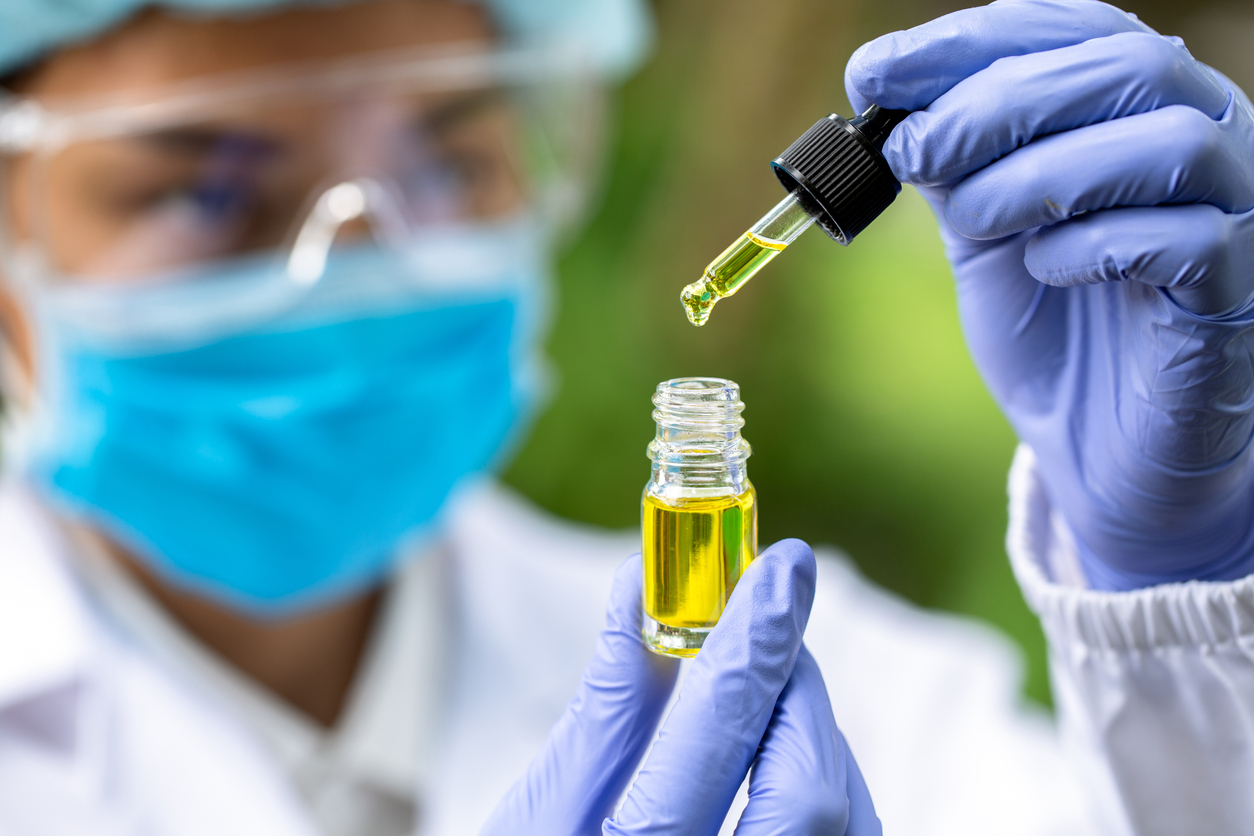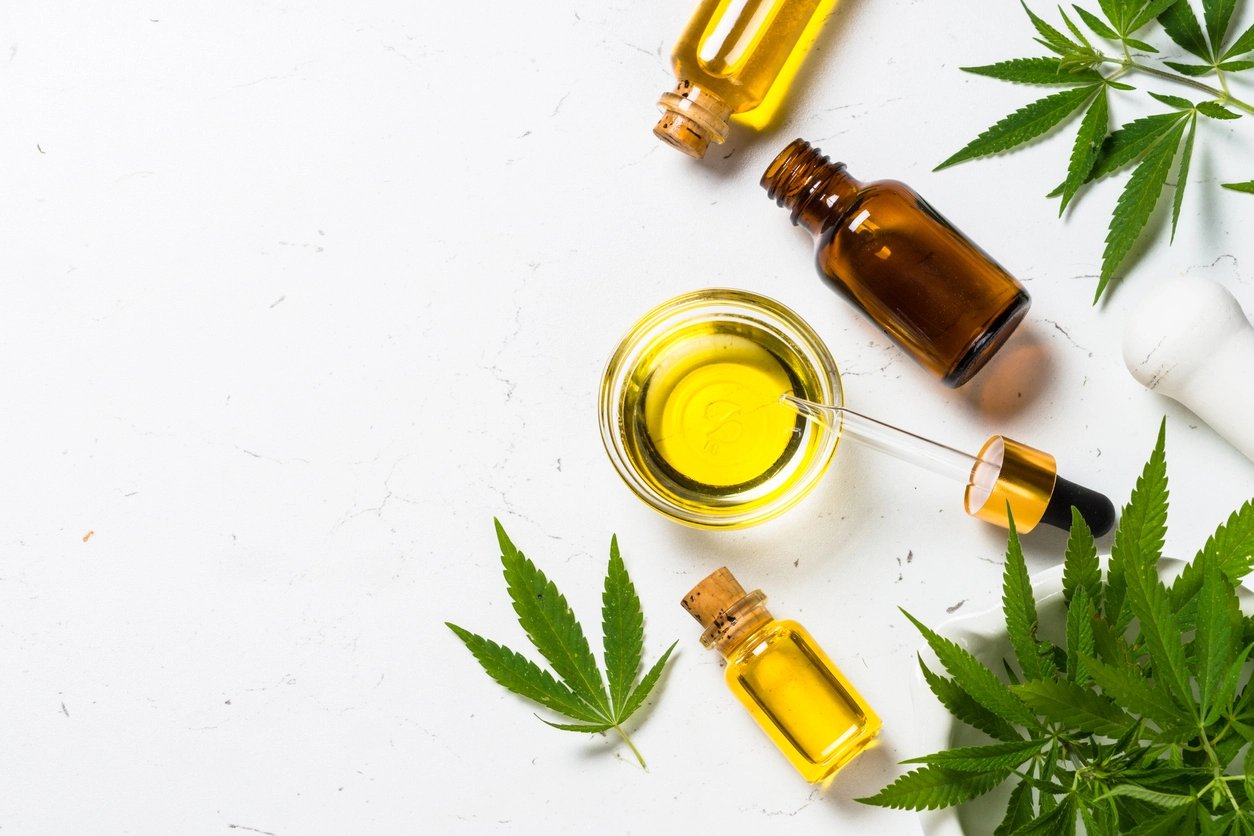Ensuring the safety of cannabidiol (CBD) products is crucial to protect public health, promote consumer confidence, and support responsible industry practices. Despite the potential benefits...
Elevating CBD Safety Standards: A Roadmap for Regulators
Cannabinoids

Oct 11, 2023 | Published by Cristelle Santos
Cannabinoids
Introduction
The increasing popularity and availability of cannabidiol (CBD) products has raised concerns regarding their safety, quality control, and regulatory oversight. CBD, a non-psychoactive compound derived from cannabis plants, has gained significant attention for its potential therapeutic and medicinal properties. Consumers are using CBD products for various purposes, ranging from pain management and seizure control to anxiety relief and general wellness. However, the rapid growth of the CBD market has outpaced the establishment of comprehensive safety standards and regulations.
Ensuring the safety of CBD products is crucial to protect public health, promote consumer confidence, and support responsible industry practices. Despite the potential benefits associated with CBD, both the European Food Safety Authority (EFSA) and the Food and Drug Administration (FDA) have highlighted several data gaps. These include the effect of CBD on the liver, gastrointestinal tract, endocrine system, reproductive and developmental toxicity, nervous system and psychological function. No Observed Adverse Effect Level (NOAEL) identification, drug-drug interactions, toxicokinetics in different matrices, half-life and accumulation have also been highlighted as lacking information. Therefore, it is essential to evaluate the adequacy of existing product safety standards, review new scientific data that has been published recently and identify potential gaps in order to establish a solid foundation for the responsible production, distribution, and consumption of CBD products.

After conducting extensive research for several months, I successfully defended my thesis titled 'Adequacy of Product Safety Standards for CBD Products' at the University of Geneva, Switzerland. Respected experts in the field reviewed and validated the depth of this investigation, which proposed a testing framework to align and improve the safety standards for CBD products. The valuable insights gained from the thesis defence further reinforce the credibility of my research, which I have summarised in this blog post.
Lessons Learned from Regulatory Interventions
In 2019, the United States experienced an outbreak of vaping-related lung injuries, known as “EVALI”, E-cigarette or Vaping product use-Associated Lung Injury. After extensive investigations, the Centers for Disease Control and Prevention (CDC) concluded the inclusion of vitamin E acetate in e-liquids as the cause. This chemical had been used as a thickener or cutting agent in illicit THC vaping products. EVALI triggered regulatory interventions, including heightened scrutiny of product safety and the identification of potential contaminants. This has emphasised the importance of robust testing for contaminants, and the need for clear communication on potential risks associated with specific consumption methods. EVALI demonstrates the need for the regulated implementation of a robust safety framework for cannabis products.
Evaluation of Product Safety Standards
The regulatory frameworks governing CBD products in key regions like the European Union, the United States, Canada, and Australia have developed separate approaches, taking into consideration factors such as safety, consumer protection, and public health.
Each of these regulatory frameworks has its strengths and limitations. The European Union provides a comprehensive approach with separate regulations for novel foods and medicinal products, ensuring safety and efficacy. The United States is undergoing regulatory development, but the need for clear guidelines creates challenges for CBD manufacturers and consumers. Canada has established a robust framework, including licensing requirements, quality control measures, and packaging and labelling regulations. However, this framework was driven by the need to overcome the illicit market and is not backed by safety data. Australia's regulatory framework is evolving, with a focus on prescription-based access to CBD products, but changes are being considered to increase access to certain therapeutic indications.
The regulatory frameworks governing CBD products face several significant challenges. These challenges may impact the success of the frameworks and delay the establishment of adequate product safety standards. Currently, the key challenges faced by the major regulatory frameworks are:
- Lack of Standardisation: One of the main challenges is the need for standardised regulation. Each jurisdiction has its own set of rules, requirements, and permitted upper limits for cannabinoids which can create confusion for manufacturers and consumers operating in multiple markets. The US presents a clear example, where in addition to federal regulations, individual states have implemented different regulations for CBD products. These state-level regulations can vary in terms of licensing requirements, THC and controlled cannabinoid limits, and product labelling. In the EU, the scenario is similar; each member country can implement its own rules and interpretations of the European regulations.
- Unclear Regulatory Pathways and Evolving Nature of the Industry: The lack of clear guidance from regulatory authorities can create uncertainty for manufacturers and delay the development of a robust and well-regulated market. New products, delivery methods, and formulations are emerging, introducing new challenges in terms of safety assessment and regulation. Regulatory frameworks and product safety standards must adapt fast to these changes to stay relevant and effective in safeguarding consumer health.
- Compliance and Enforcement: Ensuring compliance with regulatory requirements and enforcing regulations poses significant challenges. With the rapid growth of the CBD industry, monitoring and enforcement become more complex. Regulatory agencies need adequate resources to effectively monitor the market, conduct inspections, and enforce compliance. Inconsistent enforcement can lead to non-compliant products entering the market and potentially compromising consumer safety.
- Scientific Knowledge Gaps: Despite the growing body of research on CBD, there are still knowledge gaps. Both EFSA and FDA require robust scientific evidence to evaluate the safety of any substance intended for human consumption. The limited availability of comprehensive safety data raises concerns for these regulatory bodies. These knowledge gaps make it challenging for regulatory agencies to establish evidence-based regulations and set appropriate safety standards. Further research and collaboration between regulators and scientific communities is needed to fill these gaps and inform regulatory decision-making.
- Misleading Product Claims: The CBD market can be misleading because of the unsubstantiated product claims often used as a marketing strategy. Some manufacturers make unsupported health claims about CBD's therapeutic benefits, creating confusion among consumers and potentially endangering public health. Regulators face the challenge of effectively monitoring and addressing false or misleading claims to protect consumers.
Addressing these challenges requires a multi-faceted approach. Regulatory agencies need to collaborate with the industry, scientific experts, and consumer advocacy groups to develop comprehensive and harmonised regulations. Clear and consistent guidelines, increased resources for compliance monitoring and enforcement, and public education campaigns are also crucial. Additionally, continued research efforts and knowledge sharing can help fill existing gaps and ensure evidence-based decision-making. By addressing these challenges, regulatory frameworks can be strengthened, leading to safer and more reliable CBD products for consumers.

Enhancing Product Safety Standards
Recommendations for Regulatory Agencies
Regulatory agencies play a crucial role in establishing and enforcing product safety standards for CBD. It is clear that continuing with either prohibition or an unregulated market would be the worst-case scenario. Prohibition would reduce consumer protection as unregulated and uncontrolled products may be sourced through the black market, and safety standards cannot be enforced where regulation does not exist. Development of the existing regulatory frameworks would be a preferable outcome, and current standards may be enhanced by incorporating the following recommendations:
- Harmonisation of Regulation: Regulatory agencies should strive for greater harmonisation of CBD regulation across jurisdictions and for the establishment of the same upper safe limits for the different cannabinoids. This will facilitate consistent safety standards, labelling requirements, testing protocols, and manufacturing practices, reducing confusion and ensuring consumer protection.
- Comprehensive Testing Requirements: Regulatory agencies should mandate comprehensive testing requirements for CBD products, including testing for CBD, THC and other cannabinoids, as well as contaminants such as pesticides, heavy metals, residual solvents, and microbial contaminants. These testing requirements should be clearly defined and enforced to mitigate potential health risks.
- Clear Labelling Guidelines: Regulatory agencies should provide clear guidelines on labelling requirements, ensuring accurate and transparent information for consumers. This includes guidelines on CBD, THC and other cannabinoid content disclosure, appropriate and substantiated health claims and allergen labelling. Child-resistant packaging should be mandated.
- Post-Market Surveillance: Regulatory agencies should establish robust post-market surveillance systems to monitor the safety and quality of CBD products. This includes mechanisms for reporting and investigating adverse events, tracking product recalls, and conducting regular market inspections to identify non-compliant products.
Health Canada (HC) has established a comprehensive and robust regulatory system that controls the entire process from cultivation through production and sale of products for medical and recreational use. This system also covers post-market surveillance warnings to licensed producers when non-compliant products hit the market. The recommendation to other regulators would be to evaluate the HC model, identifying strengths and monitoring benefits from the point of legalisation in 2018. However, the Canadian system also presents some limitations that could be improved.
The primary limitations of the Canadian Regulatory Framework are presented below with recommendations to address these challenges:
- Lack of safe upper limits for cannabinoid consumption for the two main routes of exposure: ingestion and inhalation.
- Recommending a limit of CBD per day on an intermediary basis while toxicological data continues to be generated and reviewed.
- Mandatory labels warning of potential toxic effects and maximum daily doses may discourage some users from using the products and increase safety margins.
- Labelling of allergens and skin sensitisers present in the product formulations. CBD e-liquids may contain very high levels of terpenes and the toxicological risk assessment of these sensitisers, as well as labelling requirements, are not mandatory. In addition to the natural terpene content of the raw material, terpenes may also be added as flavourings.
- High terpene levels are usually advertised in markets like Canada. Many terpenes have a long history of safe use in food and cosmetic products. Common terpenes like limonene (found in citrus fruits) and linalool (found in lavender) have been deemed safe for consumption by regulatory authorities. However, individual sensitivities or allergies should always be taken into account and labelling of these compounds should be mandated by the respective regulating bodies.
- Like many substances, the toxicity of terpenes depends on the dosage. At typical exposure levels, such as through dietary intake or using products as directed, the risk of toxicity is generally low. However, the risks of inhaling these terpenes are not fully studied, and cannabis product manufacturers should carry out robust toxicological risk assessments since these compounds have the potential to cause respiratory sensitisation and irritation when inhaled and skin sensitisation when in contact with the skin. These potential risks should be assessed, particularly when these substances are heated or vaporised. Heating terpenes at high temperatures can lead to the production of potentially harmful compounds in emissions.
- Emissions testing for inhalation systems is not mandated.
- The nicotine e-cigarette experience should be used to inform the potential risks of similar product categories. It is well known that when e-liquid is heated and vaporised some degradants with potential toxic concerns may be generated. Such constituents should be assessed and contextualised using exposure data and risk managed appropriately by comparing these with alternative forms of consumption, e.g., smoking cannabis.
- Emissions testing is not a requirement currently mandated by Health Canada, however, it is recommended that manufacturers consider this type of testing as part of their product stewardship activities. Although enforced emissions testing is not in place in Canada, other regulatory bodies may include this when developing a robust regulatory safety framework.
- Device compatibility assessment for inhalation systems is not required.
- The devices currently being used by the cannabis industry are outdated. While the tobacco industry has invested significantly in the development of high-quality devices to be used with nicotine formulations, the cannabis industry is associated with electronic devices that resemble the early-generation versions of e-cigarettes. Therefore, these devices may not be optimised based on current understanding and available technologies.
- The materials present in these devices must be risk assessed, taking into consideration their location in the device i.e., the level of contact with the consumer, direct contact with the e-liquid or with the vapour, etc. The compatibility between the base formulation and device should be assessed via extractables and leachables testing.

Safety Framework for CBD Products
My research focused primarily on CBD products. I have carried out a thorough risk assessment based on an up-to-date literature review and derived a safe level for CBD taking into account each toxicological endpoint of concern raised by EFSA in 2022.
When developing products for oral consumption, there are several important factors to consider. These include shelf-life and photostability studies, purity testing, contaminant testing (such as heavy metals, pesticides, solvents, and microbiology), and the formation of degradants over time that may pose toxicological risks.
When compared to ingestion, the inhalation route of exposure is slightly more challenging and raises more concerns. When CBD e-liquids are vaporised, some additional issues need to be considered, such as the presence of proteins and lipids in the raw material due to poor extraction methodology. It is important to conduct a robust risk assessment of the formulation ingredients, with special attention given to terpenes, which can cause serious allergies when present above a certain level. Emissions testing is also extremely important in order to understand exactly what consumers are exposed to when the e-liquid is heated up and vaporised.
Toxicologist, Cristelle Santos can provide consultancy and product specific testing strategies, and would be pleased to meet any clients with questions on how Cristelle's safety framework may be applied.
Conclusion
In conclusion, establishing a robust safety framework for CBD is not merely a matter of caution; it is imperative in today's rapidly evolving CBD market. As the popularity of CBD products continues to rise, consumers' health and well-being need to be protected. A comprehensive safety framework would provide clear guidelines for manufacturers, ensuring the production of high-quality, uncontaminated and safer products. By prioritising the implementation of a safety framework such as proposed in my thesis, we can safeguard public health, foster industry transparency, and pave the way for a future where the potential benefits of CBD are realised without compromising safety.
The findings of my research have several implications for policy and regulation. Regulatory agencies should consider regularly reviewing new data and refining existing regulations in line with the evidence base. The implementation of a comprehensive safety framework, as proposed in my thesis, may be challenging to implement given the range of regulatory bodies that may be involved in an approval process. However, regardless of the potential challenges, a robust safety framework is strongly recommended as a necessary safeguard to protect consumer health.
To learn more about our medicinal cannabis and CBD consulting services please click here


